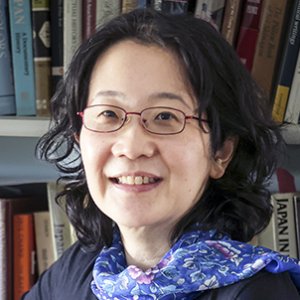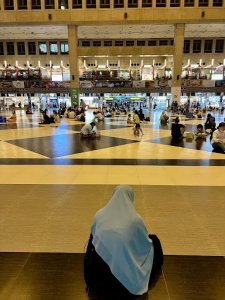“Wear flannel…you must wear flannel,” Tada Tsunasuke repeated in his October 1896 report from Taiwan. Tada was the first Japanese zoologist dispatched by Tokyō Imperial University to investigate the new colony’s fauna, and was surprised by the cool temperatures in the summer months.. Many Japanese hitherto had imagined Taiwan as a tropical island—likely based on earlier compatriot experiences, such as the 1874 invasion whereby most of the casualties succumbed to malaria, or through publications such as Alfred Russel Wallace’s Island Life, which celebrated Taiwan for its rich animal population. Japanese scientists hence had enough literature from which to learn of Taiwan’s fauna and environment at large; Tada repeated in his reports some of these earlier observations, such as the fear of malaria, to a perhaps biased degree.
Being on the ground also led to new discoveries. Tada expressed surprise as he encountered the island’s subtropical and tropical biomes for the first time, of which the unexpected variation in daily temperature was just one aspect. Similar narratives continued throughout the 1920s and 1930s, seen in journals written by zoologist and ethnologist Kano Tadao as he explored Taiwan’s central mountain ranges with help from Indigenous guides.. His journal repeatedly expresses awe at magnificent mountain ranges and animals hitherto undiscovered to science.
Because one of the primary Japanese interests in Taiwan was an exploitation of the island’s rich natural resources, many of the biologists dispatched south were those trained in those applied sciences: agronomy and forestry. Hence, wherever on the archipelago these scholars had spent their childhood, many were trained at what became Tōhoku (est. 1907) and Hokkaidō (est. 1918) Imperial Universities, with strong programs in those fields that also happened to be the northernmost Imperial Universities of the metropole. The difference between Taiwan’s environment and the mostly temperate Japanese archipelago, the Hokkaido/Tohoku area bordering the subarctic zone, and for some of the northern American or European universities where they studied abroad, must have been astounding. Their writings illustrated their initial impressions of Keelung Harbor as they began to take up their positions on the island. Yet, the situation was somewhat different from the early English colonizers who set foot in Australia and struggled to classify the kangaroo. Due to biogeographical patterns, Taiwan, Japan, and northern America shared commonalities, such as the cypress genus. Japanese scientists’ insights changed and deepened, as they further encountered what we would today call the island’s biodiversity and majestic topography. Eventually, they began to live in their new natural and cultural environments.
What colonial science meant for Japanese scientists in Taiwan, as well as those in the metropole and in other quasi-colonies, and how it changed over time warrants reflection in a way that has been done more extensively for the British in India. The historiography of Imperial Japan’s science, and more specifically zoology, began with selective amnesia. Most works written prior to 1945 considered the colonial era too recent to narrate, as history and those written after 1945 dismissed scientific research conducted in the colonies. This was likely an effort to forget the lost war and empire. This situation was hardly unique to the history of science, and often led to a peculiar whitewashing of individual’s careers and research, including that of Ueno Masuzō. Ueno is known as the so-called father of Japan’s history of natural history and zoology whose own scientific research is most often linked to the field of limnology. Early in his career during Imperial Japan, Ueno’s research location traversed the empire, spanning from the Kuriles to Taiwan. Yet, these locations and the research results from these regions disappeared from his history of the field.
In the past decade, historians of Imperial Japan began to critically examine the science and technology in the colonies, focusing on the continental quasi-colonies and scientific colonialism rather than colonial science. Works on the latter often focus on the colonies alone, rather than attempting to assess the empire as a whole or specific colony-metropole relationships. Hence, a more comprehensive picture of how aspects of Imperial Japan’s science and technology functioned was created, examining how scientists saw each of their own research as a whole within Imperial Japan remains to be analyzed more fully. Before 1945, some Japanese scientists envisioned the empire as one large field, perhaps in addition to other more specialized perspectives.
In this context, colonies were no less peripheral as research and field sites than any other region in the metropole. Here, the term “field” might be defined more clearly, for it is often used juxtaposed to metropole labs where scientists undertake analyses. Whereas in the field, they primarily gathered data, observations, specimens, and more. Especially in disciplines such as biogeography, that up to the mid-twentieth century remained primarily observational and not experimental, fields were labs: the term outside laboratory might hence be more accurate.
Imperial Japanese scientists based in Taiwan, with specific attention here on entomologists, increasingly saw Taiwan as the core of their field and not a colonial outpost. Their hundreds of articles discovering thousands of insects, and sometimes assessing their zoogeographical significance, centered their findings within the Japanese empire, often juxtaposed with other peripheral zones such as the metropole or other quasi-colonies on the continent or elsewhere. Although the enterprise maintained its colonial intent, in the sense that the benefits were for themselves and the Japanese empire, the sentiment changed over time. The deaths, damages, and sufferings these colonizers inflicted upon the older residents of Taiwan, particularly the Indigenous peoples, as well as the environment in which they lived, was substantial and must not be excused. In fact, the Japanese scientists were often merely translating into their own framework the knowledge already possessed by the Indigenous and Taiwanese peoples, exemplifying the colonial nature of their undertakings. Colonial sciences were rarely creations of the colonizers alone.
Yet, in Taiwanese entomology’s relationship with that of the metropole, the island became, if not the center, one of its centers. Those residing outside Taiwan often agreed to this perspective for natural history as a whole and not limited to entomology. When scientists based in Taiwan founded in 1910 what was to become the island’s foremost natural history organization, its membership was largely those residing in Taiwan. By the late 1930s, the number of members outside Taiwan exceeded those registered on the island, and this pattern continued until the early 1940s, when reporting of such matters ceased. Taipei Imperial University (also known as “Taidai”), established in 1928, had by then become known as the leading site for entomological research, boasting state-of-the-art facilities including vast specimen and literature collections unparalleled in the metropole, with funding to turn those in the metropole green with envy.
Professors at Taidai were known throughout the empire and the world, with specimen samples routinely being sent to them for analyses, similar to how to turn of the century Japanese and other scientists sent their catches to the renowned Stanford University ichthyologist David Starr Jordan. Their recognition was such that by the 1930s one of Taidai’s professors, Shiraki Tokuichi, sat on the board of the International Entomological Congress. In 1934, Taipei hosted the commemorative tenth annual meeting for the Japan Association for Advancement of Science, the foremost natural science research promotion organization in Japan. The meeting gathered accomplished and high-profile scientists from throughout the empire, including zoologist Ishikawa Chiyomatsu, who passed away in Taipei during his visit. Taipei was the first city outside the metropole, legally defined, to host an Association meeting, following eight large metropolitan cities and preceding such cities as Kanazawa and Okayama. Taiwan-based scholars had invited the doyen of zoology to enhance the island’s scientific reputation further.
Entomologists such as Shiraki and Sonan Jinpaku arrived in Taiwan as young scholars and for four decades, only leaving after the Japanese defeated the island. Chu Yau-I, a Taiwanese historian of science and renowned entomologist, wrote that the Japanese exploited Taiwanese nature to their benefit as much as the Nationalists did after 1949. Despite their colonization of the country, the Japanese did bring some benefits to the Taiwanese. The difference between the two, he continued, was that the Japanese scientists were in Taiwan both in body and soul; the Nationalists were physically in Taiwan but their hearts were on the continent. Chu was born in Tainan, earned his doctorate at postwar Kyūshū University, and was a professor at National Taiwan University. His mixed assessment of the Japanese as well as his large political critique of the KMT may have been a product of this background. The Imperial Japanese scientists’ cases, especially of those like Shiraki and Sonan, suggest that one’s heart often changed with extended physical presence on this island as they gradually made it their home. Individual temporalities vary, and how each researcher regards Taiwan as a home and a place of research differs . Few today would disagree with Chu, and agree that Imperial Japanese researchers in Taiwan were extractive and exploitative while practicing colonial science. Without denying this reality, how Imperial Japanese scholars saw their own undertakings, and the contradictions and subtleties within their thoughts and actions, must be explored further to understand the complexity of Japanese colonial Taiwan.
Be it for scholars of natural or human histories, and for those residing in Taiwan for four decades or ten months, physical presence at research sites adds perspectives unmatched by study through literature alone. Being participant-observers, occupying a space closer to the research target, albeit as different species in the case of natural historians and in different temporalities for human historians, alters the relationship we have with the subjects we study. Since the era of New Imperialism, relationships between foreign researchers residing in Taiwan and their host have shifted dramatically from colonialism to that of reciprocal cultural and academic exchange. Yet, physical links remain invaluable and imperative to deepen understanding of a particular region and its human and non-human inhabitants, past and present. We are fortunate to be able to build stronger relationships built on mutual benefit and free will, something that must not be taken for granted.
Managing Editor: Jackie Hardwick







